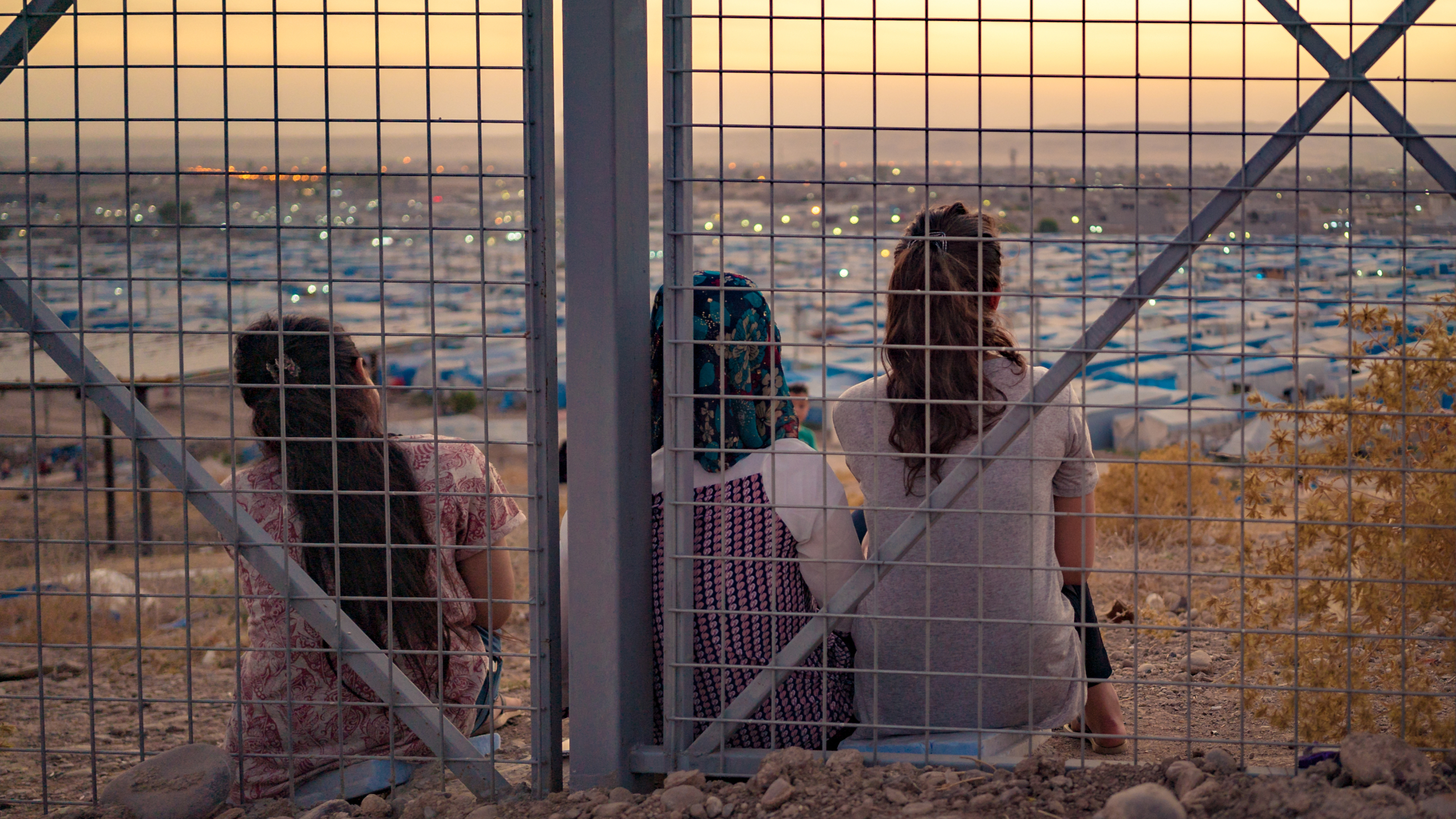Sign up for The Media Today, CJR’s daily newsletter.
One of the most horrific stories to emerge from the Islamic State’s reign of terror in Iraq is the systematic rape and enslavement of Yazidi women.
Labeled a genocide by the United Nations, the Islamic State targeted the minority group, which has been persecuted for centuries, due in part to its esoteric religion.
But the the methods used to report the stories of those abuses have sometimes been problematic, a new study in Women’s Studies International Forum finds.
“I had picked up a paper while in line for coffee and I saw a headline that really disturbed me,” says co-author Johanna Foster, head sociologist at Monmouth University. She had barely read past the headline—which contained the term “sex slaves”—before she felt “so disturbed that it was just going to fit into what is, sadly, a long history of media reporting on sexual violence in pretty voyeuristic ways, and not really looking at the context of the violence,” she adds.
Foster and her co-author, Sherizaan Minwalla, a human rights lawyer in residence at American University, conducted 90 interviews with Yazidi women about their interactions with the international media. Their findings were staggering—85 percent of the women reported that journalists engaged in unethical practices while reporting on victims of ISIS, often pressuring women to speak, or failing to adequately protect their privacy.
“Each time we tell them our stories, we go back to them, like a flashback,” says one of the women interviewed for the report. “It is difficult, too much. They remind us of what happened to us again. And I tell them, please enough, please enough. I cannot talk about that. Please don’t remind me. It’s not easy.”
Even when their intentions are good, journalists reporting on traumatic and sensitive topics need to take extra steps to ensure that getting a story doesn’t come at the expense of the person sharing it. “Narrative storytelling has a power to get people’s attention,” Minwalla tells CJR. “I think it’s really a question of how you identify who those people are, and if they’re ready to tell their story. If we can spark a conversation about how to tell that story while respecting the safety and dignity of the source, we’ll be doing a better job.”
CJR spoke with Foster and Minwalla for insights on ethically interviewing survivors of sexual violence. Eight key takeaways emerged from those conversations.

Photo by Shawn Carrié
1. Put the subject first
Journalists know that every interview should begin with setting clear ground rules. It’s especially important when interviewing survivors of trauma.
Academics are bound by standards set by ethics review boards. While the same isn’t true for journalists, a core principle of the trade is to do no harm.
“When I interview someone who’s suffered trauma,” Minwalla says, “I make sure they know that if there’s something they don’t want to talk about, they don’t have to.”
Informed consent is crucial. Be sure an interview subject understands why they are being asked to share their story, what it will be used for, and that their choice is made freely with an understanding of the risks. “There can be confusion about who is interviewing them,” Minwalla says. “NGOs do a lot of interviews, but also legal investigators, and local activists. Women [in our study] were sometimes confused about who was interviewing them, and for what purpose.”
2. Be honest
By the same token, interview subjects do not always have the same media savvy as journalists, or their readers. Still, it’s a journalist’s responsibility to explain what their job is, and what it isn’t.
A key finding in Minwalla and Foster’s report was a common perception among Yazidi women that speaking to the media would result in positive change for their community, as well as the distress caused when that change didn’t materialize.
“They take our stories and they don’t do anything for us. They come here and they take videos, take pictures, ask questions, and then they go,” one Yazidi women is quoted as saying in the report. “We don’t know where they’re going and what they do with our stories…they ask, ‘What happened to you? How did you escape? What did they do with you? What did ISIS do with you?’ And we tell them everything and we don’t know why they come here even and tell nobody to help us…I just want to ask them why you are taking our voice? Why are you taking our stories and you don’t do anything for us?”
Journalists should make it clear that the only power they have is to tell the story, and hope that others make change. They should not make promises—especially to vulnerable people—that telling those stories will indirectly benefit the lives of their sources.
Contextualizing the crime of rape in the conflict needs to be central. Otherwise it’s selling a narrative of a woman’s violation for the sake of titillating readers. Rape is a tool of war, and a war crime—it should be framed that way.
3. Don’t re-traumatize
Foster and Minwalla agree that it’s both unnecessary and harmful to ask survivors to recount gritty details of a trauma, which could cause a person emotional distress.
“You don’t have to tell the story of the rape or the assault in order to tell the story of the crisis,” Foster says. “That’s just number one.”
Notably, in all of the interviews Foster and Minwalla conducted for their report, they never once asked a woman if she was raped.
“Pausing and checking with the person you’re interviewing” are good ways to make sure you’re not overstepping boundaries, says Minwalla. “Ask, ‘Are you comfortable?Do you want to take a break?’to just reinforce that people have choices.”
4. Protecting your source’s privacy is your responsibility
Journalists need to be especially cautious when publishing names, photos, or any other information that identify the survivors they spoke with, since doing so could expose them or their loved ones to stigma or even retaliation.
Iraqi authorities estimate that of the approximately 7,000 Yazidi women and girls who were captured by ISIS, more than 1,600 remain in Islamic State captivity to this day, even after the militants were ousted from their major territorial holdings.
“If any of their loved ones are still in ISIS captivity, there’s a good chance that they could be abused more,” says Minwalla. Even if someone agrees to a photo, journalists should be aware of potential repercussions.“Even with my face covered, I did not feel safe,” one woman says in the report. “They know everything about me. They can know me from my eyes. Even I know them when they are covered and just by their eyes.”
5. Do your research
The Society for Professional Journalists, Columbia University’s Dart Center for Journalism and Trauma, and the UN’s Global Protection Cluster all publish guidelines for reporting on sexual violence.
NGOs and experts who work in affected communities should be a first point of reference for journalists looking to cover crises—but the person being interviewed should always have the final say.
“People often feel obligated or indebted [to NGOs], and that might skew their ability to really say nowhen they’re getting food and clothing and medical support from these organizations,” says Minwalla.
“Yazidi community leaders were pressuring some of these women to give interviews because they thought if they tell the world about what happened, someone will help them,” she adds. “Being aware of those dynamics is important.”
6. Set up interviews with subjects in mind
Choose your crew carefully. It should be obvious that female survivors of sexual violence could feel uncomfortable or even retraumatized in a roomful of men they don’t know. But understanding the culture of the community where you’re reporting is just as important. Choose the location where the interviewee will feel safe, and not attract any unnecessary attention or stigma.
“Many Yazidis hadn’t yet gotten to a place where they felt safe in Kurdistan, even though they were supposedly safe and away from ISIS,” says Minwalla, “but there are problems with the Kurds. So if you bring a Kurdish Muslim man from Erbil to interview a Yazidi woman, that’s just so wrong.”
7. Give context
“Contextualizing the crime of rape in the conflict needs to be central. Otherwise it’s selling a narrative of a woman’s violation for the sake of titillating readers, Foster says. “Rape is a tool of war, and a war crime—it should be framed that way.”
Ask: What is the political context of this violence? What is the impact on survivors? What do the women who survive want us to know about their experience?
8. Be prepared for extra work
It takes times to gain the trust needed for a survivor of trauma to feel comfortable in an interview, especially when it comes to such an intimate violation as gender-based violence.
“What we heard from women was that there was too often a lack of basic regard for their dignity,” Foster says.“The story they wanted told was not just about sexual violence—they wanted the story of the genocide to be told. They wanted the world to know this was not the first time that Yazidi people were targeted for annihilation, so it really felt like the focus just on rape and sexual assault didn’t do justice to the Yazidi people.”
If a journalist can’t be confident an interviewee hasn’t been coerced to speak, Foster and Minwalla say they might just have to keep on digging.
“The public has a right to know, but that doesn’t come above the individual’s right to be safe and have choices about what they talk about, or whether they even give interviews,” says Minwalla. “Sometimes it’s just going to take some more work on the part of the journalist to get the story right.”
RELATED: How journalists may be putting ISIS suspects at risk of abuse
Has America ever needed a media defender more than now? Help us by joining CJR today.



